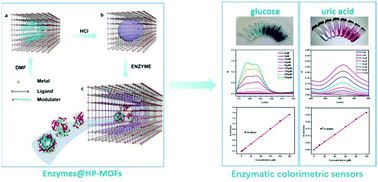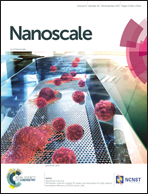A facile strategy for enzyme immobilization with highly stable hierarchically porous metal–organic frameworks†
Abstract
Metal–organic frameworks (MOFs) have drawn extensive research interest as candidates for enzyme immobilization owing to their tunable porosity, high surface area, and excellent chemical/thermal stability. Herein, we report a facile and universal strategy for enzyme immobilization using highly stable hierarchically porous metal–organic frameworks (HP-MOFs). The HP-MOFs were stable over a wide pH range (pH = 2–11 for HP-DUT-5) and met the catalysis conditions of most enzymes. The as-prepared hierarchical micro/mesoporous MOFs with mesoporous defects showed a superior adsorption capacity towards enzymes. The maximum adsorption capacity of HP-DUT-5 for glucose oxidase (GOx) and uricase was 208 mg g−1 and 225 mg g−1, respectively. Furthermore, we constructed two multi-enzyme biosensors for glucose and uric acid (UA) by immobilizing GOx and uricase with horseradish peroxidase (HRP) on HP-DUT-5, respectively. These sensors were efficiently applied in the colorimetric detection of glucose and UA and showed good sensitivity, selectivity, and recyclability.



 Please wait while we load your content...
Please wait while we load your content...